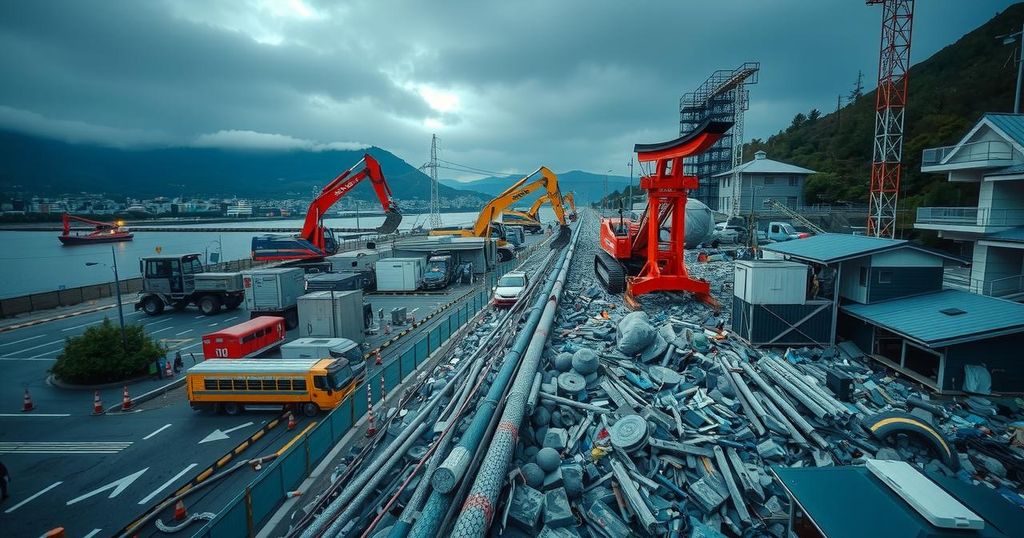The 2011 Japan Earthquake and Tsunami: A Comprehensive Overview of Aftermath and Recovery

On March 11, 2011, Japan experienced a massive earthquake and tsunami, leading to over 19,000 deaths and extensive destruction in coastal areas, particularly in Miyagi Prefecture. The disaster triggered a nuclear emergency at the Fukushima Daiichi power plant, resulting in radiation leaks and evacuations, while recovery efforts continue to address the profound impact on infrastructure and communities.
The Japan earthquake and tsunami of March 11, 2011, was a catastrophic event that profoundly affected the nation and its populace, resulting in significant human and material losses. Following the disaster, initial casualty estimates reported hundreds dead and missing; however, these figures rapidly escalated as recovery efforts revealed the extensive devastation, particularly in coastal regions. In the span of two weeks post-disaster, the official death toll surpassed 10,000, with more than 15,000 individuals remaining unaccounted for. By year’s end, approximately 19,300 individuals were confirmed deceased or still missing. The tsunami inundated various coastal towns and agricultural areas, sweeping away homes, vehicles, and countless debris, leading to the disappearance of many, including passengers on damaged ships and trains. The notable impact was felt predominantly in Miyagi Prefecture, where around 10,800 individuals were reported missing or dead, with drowning accounting for the majority of fatalities. The disaster entailed significant structural damage, worsened by fires at industrial installations, particularly in Sendai and surrounding areas. Key infrastructure, including transportation networks and utilities, experienced destructive consequences, disrupting everyday life throughout eastern Tōhoku. Moreover, the earthquake instigated a severe nuclear crisis at the Fukushima Daiichi power plant. Although the reactors automatically shut down post-quake, the tsunami compromised backup generators, leading to catastrophic failures in reactor cooling systems. This resulted in the overheating of reactor cores, initiating a series of partial meltdowns and subsequent releases of radiation. Concerns about radiation exposure prompted extensive evacuations, a no-fly zone, and food safety alerts, with contamination detected in water sources and agriculture. In April 2011, regulators heightened the nuclear emergency status to level 7, categorizing it alongside the Chernobyl incident. Although some areas became safe for reoccupation later, significant apprehensions regarding long-term radiation exposure persisted even as efforts commenced to stabilize the facility. In December 2011, the Japanese government declared that the Fukushima plant had achieved stability following a cold shutdown of its reactors. However, leaks continued post-accident, exacerbating fears about the ongoing risks presented by the nuclear facility. Recovery from this unprecedented disaster is ongoing, with rebuilding efforts aimed at restoring homes while addressing the deep psychological scars within affected communities.
The earthquake and tsunami that struck Japan in March 2011 constituted one of the most devastating natural disasters in the country’s modern history. The seismic event, which registered a magnitude of 9.0, generated massive tsunami waves that ravaged coastal areas, leading to extensive loss of life and property. This calamity was compounded by the nuclear emergency at the Fukushima Daiichi power plant, significantly affecting public health and safety as radiation concerns emerged. The aftermath included a lengthy recovery and rebuilding process that necessitated a reevaluation of disaster preparedness and risk mitigation strategies across Japan.
The Japan earthquake and tsunami of 2011 underscore the critical importance of disaster preparedness and the need for efficient rescue and recovery operations in the wake of natural calamities. The event not only claimed thousands of lives but also highlighted vulnerabilities in infrastructure and the potential for nuclear crises resulting from seismic threats. As Japan continues to engage in rebuilding efforts, the resilience of its communities remains a focal point, alongside ongoing scrutiny of safety protocols within the nuclear energy sector.
Original Source: www.britannica.com






